A heartbreaking incident has unfolded in Santee, San Diego, where a baby girl lost her life after being left in the back of a hot car. This tragic event occurred just two months after her adoptive parents brought her home. Is hot car death common?
Discovery and Emergency Response Into The Hot Car Death – An Ongoing Investigation
Diana Sofia Aleman Roman, the infant victim, was found unresponsive in the SUV parked outside her family’s home around 12:20 AM on June 13. The child had been left in the vehicle for several hours in 63°F weather before a family member discovered her and immediately called 911.
Despite being rushed to Sharp Grossmont Hospital, Diana could not be saved. The San Diego County Sheriff’s Office is actively investigating the circumstances that led to Diana being forgotten in the car and determining who was responsible. As of now, no charges have been filed.
The Dangers of Hot Cars – a Tragic Hot Car Death
Studies highlight the rapid rise in temperature inside a parked car. On a 70°F day, the temperature inside a car can soar to 104°F within just half an hour. Reaching 115°F in an hour. The human body’s organs begin to shut down at 107°F, making such environments lethal, especially for children.
Adoption and Family Background – A Loving Family
Diana was welcomed into the home of Romer and Jayson De Los Santos on April 11, after they traveled to Arizona to meet her in the hospital. Heartwarming photos captured the couple cradling Diana and introducing her to their two-year-old son, who was also adopted. Romer expressed his grief after the hot car death, writing, “I haven’t slept in days,” next to one of the photos.
The De Los Santos family had been actively seeking to adopt a second child, sharing their adoption profile on social media in November. They expressed their desire to provide a loving home filled with cherished memories. Special moments such as beach outings, biking to the park, and raising foster kittens. Romer, a senior consultant at Jama Software, and Jayson, a stay-at-home dad, have been together for over 20 years. They married in 2008 during a brief period when same-sex marriage was legal in California. Their home is described as a “zoo,” housing numerous pets including cats, dogs, chickens, and parakeets.
Community Reaction

Neighbors described the De Los Santos family as kind and attentive parents often seen playing outside with their children. One neighbor said, “They seem like a nice family who wanted to give a couple of kids a good life. It’s just a shame it didn’t turn out that way.” It seems many suggested that the hot car death wasn’t intentional.
Medical Examination and Broader Context

The San Diego County Medical Examiner’s Office will determine the cause and manner of Diana’s death. Annually, around 37 children die from being left in hot cars across the U.S. Since 1998, California has witnessed at least 56 such fatalities, according to statistics from San Jose State University’s No Heat Stroke project.
Preventive Measures and Legal Implications & Expert Insights
Parents are urged never to leave their children alone in vehicles, even for short periods. Temperatures can rise dangerously fast, posing severe risks to children who cannot regulate their body temperatures as efficiently as adults. Which can effectively cause hot car death. California law imposes a $100 fine for leaving a child under six in a car under hazardous conditions. With potential charges ranging from neglect to manslaughter depending on the outcome.
Experts explain that it’s possible for any parent to forget a child in a car, especially when distracted or following routine habits. The increase in such cases since the 1990s is partly attributed to the recommendation of placing child car seats in the back, out of sight to protect them from airbags.
Recommendations for Prevention
To avoid such tragedies, No Heat Stroke suggests placing a soft toy in the front seat as a reminder of the child in the back or placing essential items next to the child’s seat. They also recommend keeping vehicles locked at all times and teaching children never to play in cars.
The loss of Diana Sofia Aleman Roman serves as a stark reminder of the dangers associated with leaving children unattended in vehicles and the importance of vigilant parenting practices. Hot-car tragedies can happen to anyone due to human memory lapses.
Here are key strategies to prevent these incidents:
Create Safeguards: Establish agreements with child-care providers to notify each other if a child is absent or late. Set phone reminders to ensure the child has been dropped off.
Secure Vehicles: Always keep vehicles locked and keys out of children’s reach.
Visual Reminders: Place the child’s items, such as a diaper bag or jacket, in the front seat as a reminder.
Back-Seat Checks: Keep essential items like your backpack or briefcase in the back seat to prompt a check before leaving the car.
Never Leave Children Unattended: Never leave a child alone in a vehicle, regardless of the outside temperature.
Technological Solutions & Expert Advice:
Invest in car seats or vehicles with integrated reminder technology, such as SensorSafe. Systems that default to “on” are most effective. Use education and technology together to prevent these tragedies. Real-life experiences, like that of Jennifer Stockburger, highlight the importance of these precautions. Combining awareness with practical strategies and technology can protect children from hot-car incidents.
Why Michael Jackson Wore Smaller Clothes at the End of His Shows (and 8 More Revelations About His Costumes)
Michael Jackson was a picky dresser, and he wanted to stand out. That’s why his costumes had a lot of details that made everyone wonder why they were there and what they meant. For example, almost every jacket Michael Jackson wore had an armband on the right sleeve, and some of his jackets also had “777” sewn onto them.
We at Bright Side are fascinated with Michael Jackson`s wardrobe, and we`re ready to reveal some of the secrets behind his costumes!
1. Why he wore smaller costumes at the end of his shows
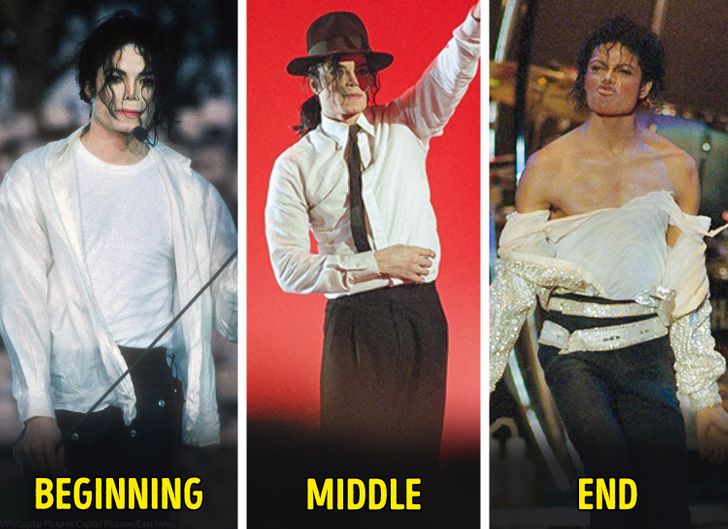
Michael Jackson`s dance routines were very physically strenuous, and he gave his all during his performances. By the end of the show, he would often lose up to 5 lbs, and his waist would become one inch thinner. And since it was important that his clothes fit perfectly, so that he could show off his dance moves, every next costume was a bit smaller than the previous one.
2. How his lean shoes worked
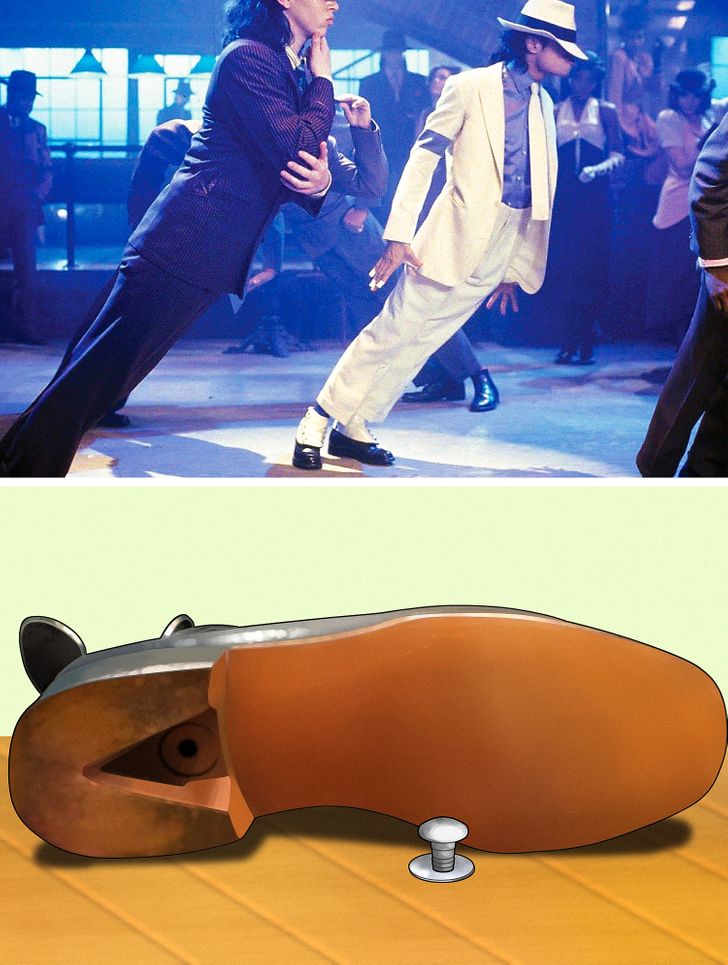
Michael Jackson`s shoes that helped him defy the laws of gravity had a V-shaped clasp at the bottom of the heels. With its help, he could hook into a nail attached to the floor and perform his famous 45-degree forward tilt. However, to be able to do that and to keep his whole body straight, an incredible amount of core and leg strength was also needed.
3. Why he only wore one glove
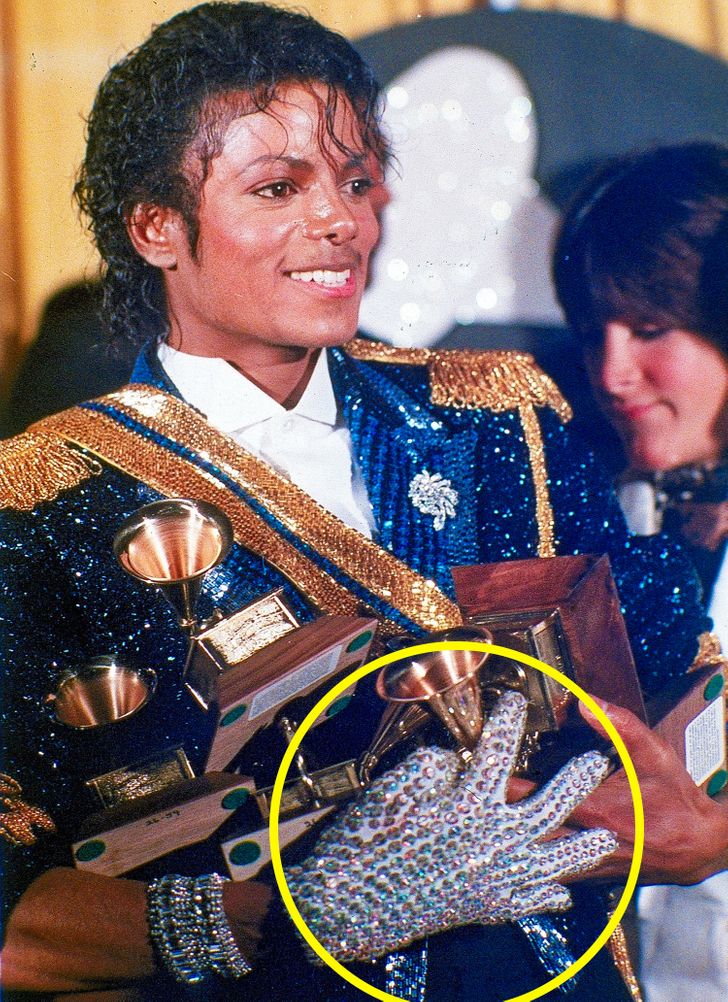
Michael had vitiligo, a skin condition where patches of your skin lose pigment. It started on his hand and he wanted to cover it up. And he thought it would look too ordinary to wear 2 gloves, so he would only wear one.
4. Why almost every jacket had an armband on the right sleeve
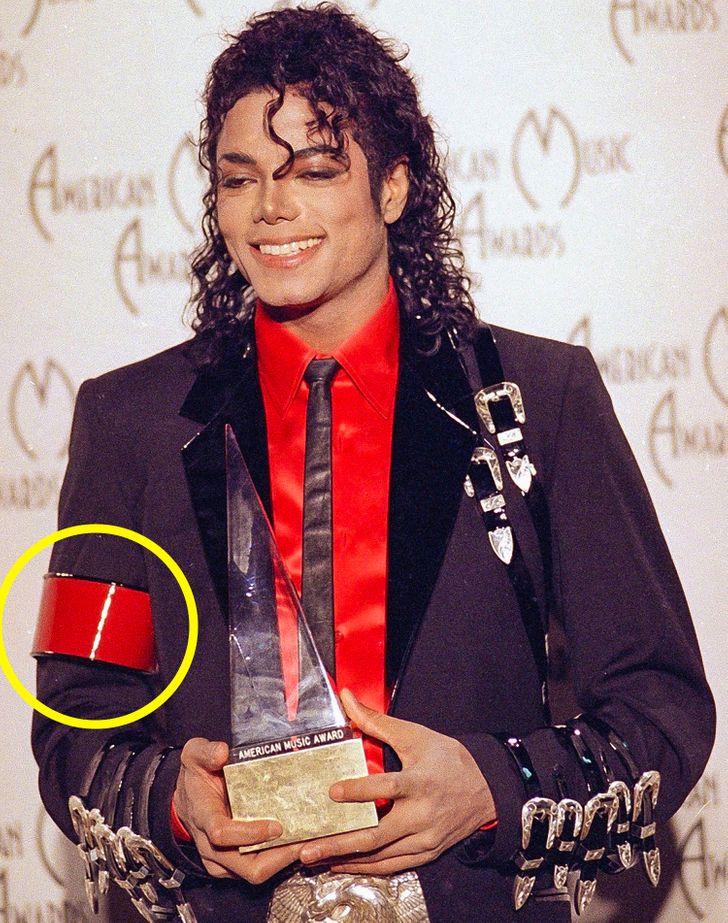
Michel Jackson just wanted his clothes to be different from everyone else’s. And having an armband on a sleeve makes your look distinguishable. Michael also liked to make his fans wonder why that armband was there.
5. Why there are 3 № 7s sewn onto his jackets
Michael was the 7th child in his family. Also, he was born in 1958, and if you add 19 plus 58, it equals 77.
6. Why he never polished his shoes

Once, the singer`s managers were concerned about the condition of his shoes and asked his costume designer to polish them. He did it, but it made Michael extremely angry. He explained that the leather was worn off exactly as he needed it to be, and that polishing would make it too slippery for him to perform his dance moves.
7. Why he wore white socks

Michael loved wearing white socks for several reasons. No one else wore white socks with black shoes. Moreover, they would catch the light and attract attention to the movements of his feet when he was dancing.
8. Why he taped his fingers
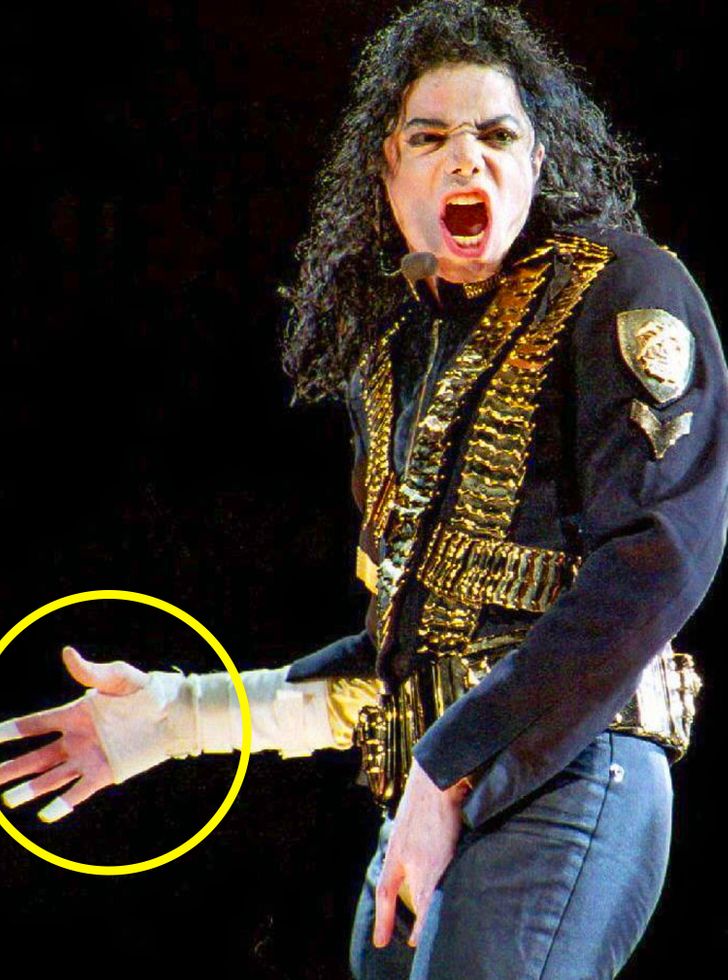
Hand movements were an important part of Michael Jackson`s dance routines. So he and his costume designers decided to wrap white tape around his fingers in order to attract more light. Michael also decided it would be more unusual to only tape his index, ring, and pinkie fingers. It was also fun for him, because fans would ask why only 3 of his fingers were taped.
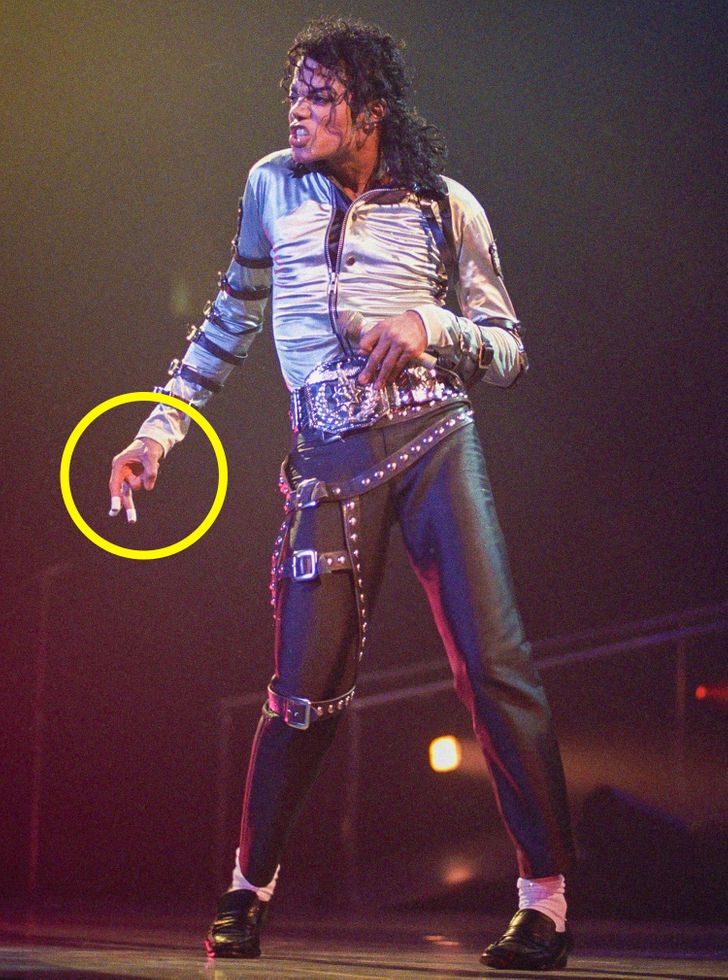
When Michael danced, he would unconsciously put his 2 untaped fingers together. And that would also add mysteriousness to his performances, since the fans would think this sign had a secret meaning.
9. What the letters CTE on his jackets stand for

These letters don`t stand for anything. In the 90s, Michael`s costume designers created a few new shirts for him. He liked them, but he wanted to add some letters on the epaulets. He said it didn`t matter which ones, so his costume designers put all of the letters of the alphabet into a hat, and took 3 of them out at random. That`s where the letters “CTE” came from.
Do you think Michael Jackson had great taste in clothes? Is there any costume of his that you like in particular? We`d love to hear your thoughts in the comments!



Leave a Reply